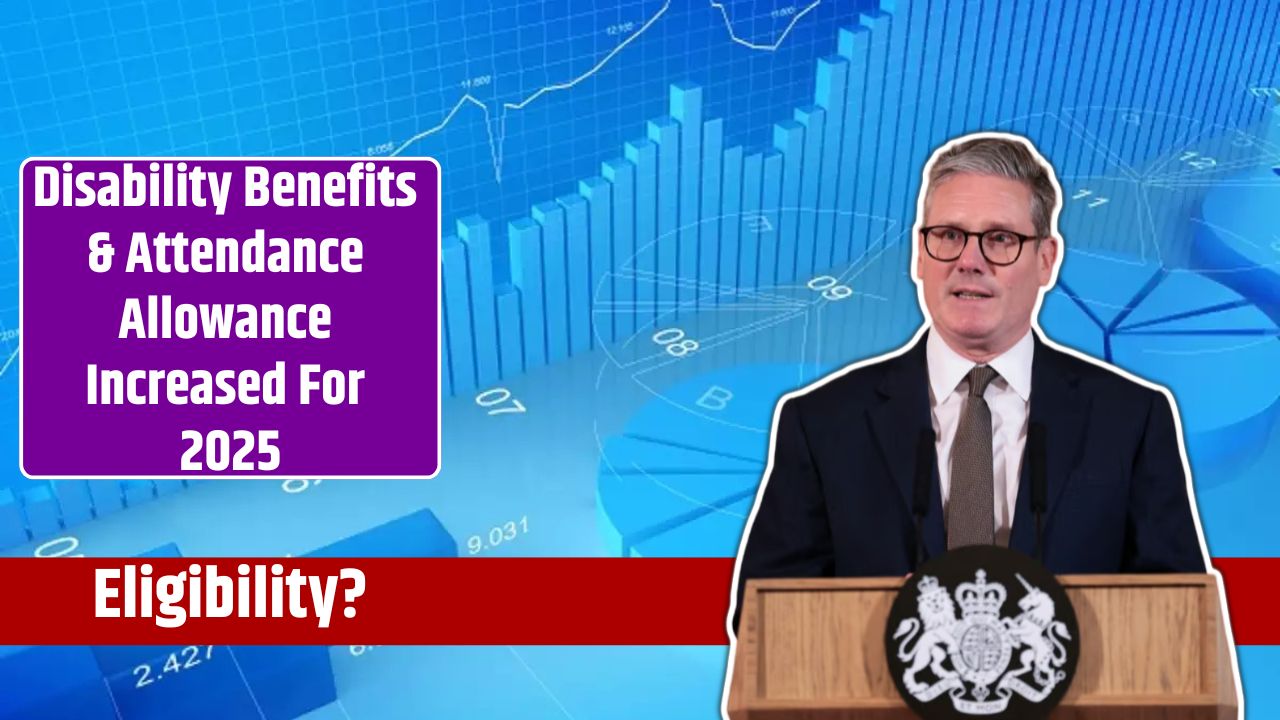The Department for Work and Pensions (DWP) has announced a 1.7% increase in disability benefits starting from April 2025.
This applies to Personal Independence Payment (PIP), Attendance Allowance, Carer’s Allowance, and other related benefits. However, due to payments being made in arrears, many claimants won’t see the increased amounts until May 2025.
While this increase provides some financial relief, disability rights groups argue that it falls short of covering rising living costs, medical expenses, and care needs.
Many advocacy groups are also raising concerns about potential changes to eligibility criteria, which could make it harder for some individuals to qualify for disability benefits.
This guide provides an overview of the new benefit rates, eligibility concerns, and savings rules for pensioners.
New Disability Benefit Rates for 2025
From April 2025, the updated disability benefit rates will be as follows:
| Benefit Type | 2025/26 Rate | 2024/25 Rate | Increase |
|---|---|---|---|
| PIP (Daily Living – Enhanced) | £110.40 per week | £108.55 per week | £1.85 |
| PIP (Daily Living – Standard) | £73.90 per week | £72.65 per week | £1.25 |
| PIP (Mobility – Enhanced) | £77.05 per week | £75.75 per week | £1.30 |
| PIP (Mobility – Standard) | £29.90 per week | £29.15 per week | £0.75 |
| Attendance Allowance (Higher) | £110.40 per week | £108.55 per week | £1.85 |
| Attendance Allowance (Lower) | £73.90 per week | £72.65 per week | £1.25 |
| Carer’s Allowance | £83.30 per week | £81.90 per week | £1.40 |
| Carer’s Allowance (Earnings Threshold) | £196.00 per week | £151.00 per week | £45.00 |
How These Changes Affect Claimants
Although these increases provide some extra financial support, they do not keep pace with inflation or the rising cost of essential goods and services. Many disability rights campaigners argue that the increase is too small to cover higher medical, transport, and care costs.
Eligibility Concerns and Potential Rule Changes
Many claimants are also worried about stricter eligibility criteria for disability benefits.
Recent Changes to Disability Benefit Assessments
In recent years, the DWP has tightened eligibility rules, making it harder for some people to qualify for benefits. This includes:
- Stricter medical assessments for PIP and Attendance Allowance.
- Changes in mobility assessments, affecting claimants who need assistance for walking and travel.
- Increased reassessments, even for claimants with long-term disabilities.
What This Means for Disability Benefit Claimants
- If you currently receive PIP, Attendance Allowance, or Carer’s Allowance, check if your circumstances have changed before the new rates apply.
- If you are applying for benefits, ensure you provide detailed medical records and supporting evidence to improve your chances of qualifying.
- If you fail an assessment, you can challenge the decision through a mandatory reconsideration or appeal.
How Much Savings Can a Pensioner Have in the UK?
For pensioners claiming benefits, savings can affect eligibility for means-tested benefits like Pension Credit, Income Support, and Universal Credit.
Savings Thresholds for Pension-Related Benefits
| Savings Amount | Impact on Benefits |
|---|---|
| Less than £6,000 | No impact – full benefits paid |
| Between £6,000 and £16,000 | Benefits reduced based on savings |
| More than £16,000 | Generally ineligible for means-tested benefits |
However, State Pension is not means-tested, meaning you can receive it regardless of how much you have in savings.
How to Maximise Your Benefits
- Check your entitlement to Pension Credit – Even small amounts of Pension Credit can unlock extra financial support, including Council Tax discounts and free NHS treatments.
- Monitor your savings – If you are close to the savings threshold, consider using funds for essential expenses before they impact your benefit payments.
- Get financial advice – Charities like Citizens Advice can help pensioners navigate savings rules and benefits eligibility.
When Will the New Rates Be Paid?
The new disability benefit rates take effect from April 2025, but most recipients will not see the increase until May 2025 due to payments being made in arrears.
To check your exact payment date, log into your Universal Credit or PIP online account or contact DWP customer services.
The 1.7% increase in disability benefits provides some relief for claimants, but many disability rights advocates argue it is insufficient given the rising cost of living.
Additionally, potential eligibility rule changes could make it harder for new applicants to qualify for financial assistance.
If you receive PIP, Attendance Allowance, or Carer’s Allowance, ensure you:
- Check your new payment rates starting in April 2025.
- Monitor DWP changes to eligibility assessments.
- Seek advice from disability support organisations if you face difficulties in claiming benefits.
For more details, visit the DWP website or speak to a financial advisor.










